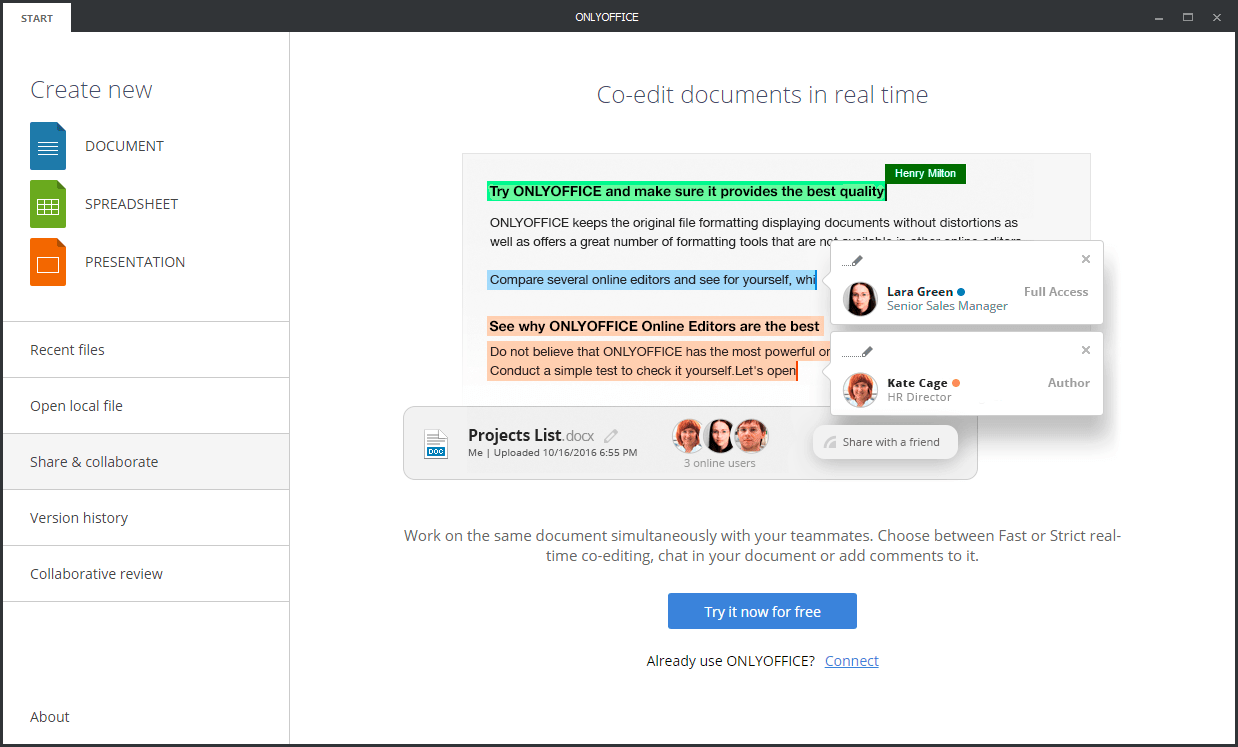Guest
on 9 March 2018
An intro to ONLYOFFICE – now available as a snap
This is a guest blog written by Kseniya Fedoruk of ONLYOFFICE.
Two years ago ONLYOFFICE developers released a desktop office suite that combined viewers and editors for text documents, spreadsheets and presentations.
Last week ONLYOFFICE Desktop Editors was released as a snap – the universal Linux packaging format. This blog explains with closer insight how the editors were created, the technological aspects, and why we decided to build the snap.

Learning the history
The story of ONLYOFFICE began in 2009, when the TeamLab project was launched, with the intention to be a set of tools for improving team workflow. A few years later we were the first to build online document editors using HTML5 Canvas element, and introduced the new product to a wider audience at one of the largest IT exhibitions – CeBIT 2012. That aroused much interest among various IT experts, companies and mass media channels such as TechRepublic.
Later, in 2014, TeamLab was rebranded as ONLYOFFICE and went open source. Since then, ONLYOFFICE Online Document Editors became the heart and soul of the project, making their further development and continuous improvement one of our main priorities.
At the same time we didn’t abandon the idea of creating desktop editors as well. It was an important point in our goal list, since lots of users still preferred to work with desktop applications. What’s more, we wanted to get rid of browser limitations to a certain extent and speed up the work with editors.
A short anatomy lesson
We decided to use the existing JavaScript code of ONLYOFFICE online editors to build our desktop application. The advantages of such an approach are obvious – development is not that complicated, and it’s convenient to update both the web and the desktop version as the code is the same.
Moreover, we developed a cross-platform GUI using Qt, so that our desktop editors could work properly on all popular platforms including Linux (both DEB- and RPM-based distributions).
Currently, ONLYOFFICE Desktop Editors allow you to:
- work with all popular formats – DOC, DOCX, ODT, RTF, TXT, PDF, HTML, EPUB, XPS, DjVu, XLS, XLSX, ODS, CSV, PPT, PPTX, ODP, FODS, FODT, FODP;
- view, create and edit documents of any size and complexity;
- extend editing capabilities with the pre-installed plugin set (e.g. inserting special symbols, YouTube videos, ClipArt, templates and more).
- automate your routine activities with macros.
Plus, you can switch to the online mode to collaborate on documents with your team in real time. To connect to the cloud, you can deploy an open-source version of ONLYOFFICE on your own server, or run a free web-based office suite – ONLYOFFICE Personal.
Why build a snap?
Why did we decide to build the snap? Our desktop editors are free and open source, and as already mentioned, they are available for download for all major Linux distributions. According to our internal statistics, Linux users install the editors often. Therefore, we were looking for ways to extend the capabilities in this direction.
We hope that delivery of our desktop editors as a snap package, including all its benefits such as quick installation, automatic updating process, and roll-back feature, will help us gain trust of Linux users and ensure their seamless experience with our product. So, by adopting the snap format, ONLYOFFICE aims to be closer and more open to an ever-growing Linux community.
Finally, we would like to thank Alan Pope, Developer Advocate at Canonical, as well as the Ubuntu community for their help with building and testing the snap.



